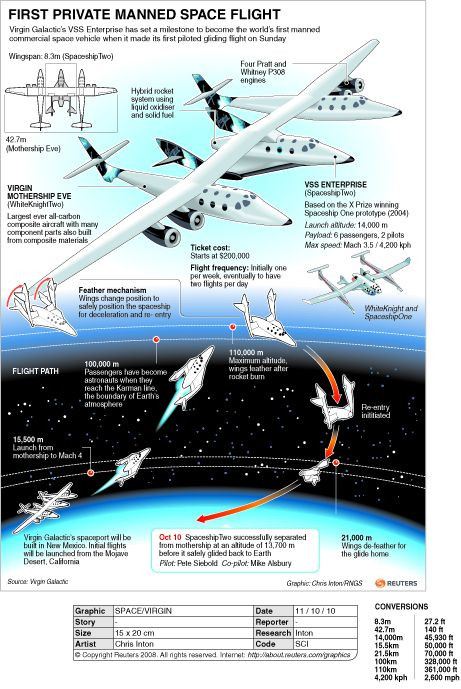Virgin Galactic SpaceShipTwo Crash: How The First Space Tourism Vehicle Works

The crash on Friday of Virgin Galactic’s SpaceShipTwo during a test flight, with the loss of at least one of the two pilots, deals a serious setback to the developing space tourism industry.
The vehicle that crashed in Southern California’s Mojave Desert was the only one of its kind existing to date; Richard Branson’s space-travel company planned to produce several more, but only one was already airworthy. The craft are designed by Scaled Composites, which also designed its experimental predecessor, Space Ship One.
Described by Virgin Galactic as “an air launched glider with a rocket motor and a couple of extra systems for spaceflight,” the craft, 60 feet (18.3 meters) long with a wingspan of 27 feet (8.3 meters), is designed to carry six passengers and two crew.
SpaceShipTwo made its first powered flight in 2013 and was projected to begin commercial service in early 2015 after several delays.
According to a description on space.com, SpaceShipTwo will carry its passengers past 100 kilometers (328,000 feet) altitude, the point where US rules specify that one can be called an astronaut. Unlike space vehicles launched by conventional rockets, the Virgin vehicle is borne aloft by a carrier airplane that takes off normally, from a runway.
The WhiteKnightTwo carrier plane, a four-engined jet aircraft specially designed to carry the Space Ship Two, climbs to 50,000 feet (15.5 kilometers), higher than commercial jets, at subsonic speed. It thenreleases the space vehicle, which fires its rocket engine for 70 seconds to accelerate to 2,500 mph (4,000 km/h).
The engine is then turned off and the vehicle keeps climbing to 361,000 feet (110 km) and giving passengers five minutes of weightlessness. It then returns to Earth as a glider and lands on a runway, like the U.S. space shuttle.

Virgin Galactic says it has received more than 700 bookings for the seats to space, each of which sells for $250,000 (refundable, the company says.)
© Copyright IBTimes 2024. All rights reserved.






















